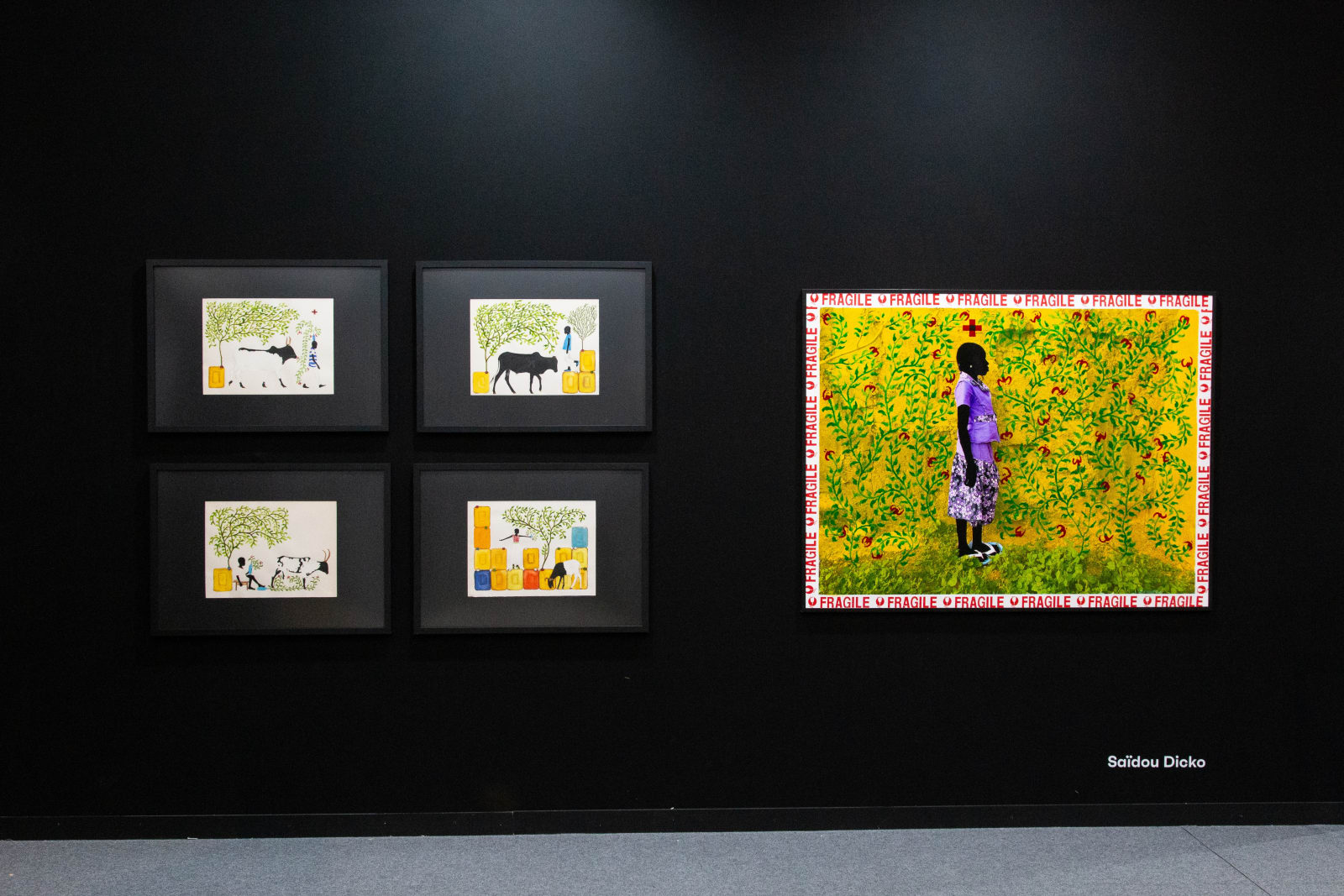AKAA: Paris
For this year’s AKAA in Paris, ARTCO Gallery proudly presents new works by visual artist and human rights activist Marcelo Brodsky (1954, Argentina) and his ongoing fight against political oppression and historical oblivion. As his Jewish family emigrated from Europe to Argentina during the Holocaust, Brodsky’s historical narratives link European colonialism with its consequences in Africa and South America. Corresponding to the curatorial focus of this year’s fair, the artist now created a series of works that deals with the liberation struggle of the Caribbean. A central figure in this protest was the author, professor and activist Walter Rodney. Born in Guyana, he became the reference person of the so-called "Rodney Riots" in Jamaica and Barbados as well as a pioneer of the Black Power movement worldwide.
A different perspective on the Caribbean and its cultural heritage is presented by Béliza Troupé (1989, Guadeloupe). After studying art in Bordeaux, she returned to Guadeloupe to set up her studio and build a bridge between these cultural spaces. In her artistic practice, she explores the multi-layered identities of the island, particularly in relation to nature and the human body. Her embroidery “Ramification II: Identité cicatricielle” (2019) shows the scars of an Afro-diasporic identity, as the title suggests. The artist began this artwork in her native Guadeloupe, then continued working on it during a stay in Bandjoun (Cameroon) and finished it back in her studio. The tapestry, which is more than 2 meters long, thus becomes a metaphor for a journey that shaped the artist like many other people. It shows the roots of an Atlantic identity that is not simply African, American or European, but was created over centuries through the brutally enforced trade between these areas across the “Black Atlantic”.
We are also pleased to present four new works by Saidou Dicko (born 1979 in Burkina Faso). Dicko, who now lives and works in Paris, draws the viewer's attention to the social contexts in his home country. We see the figures playing with water gallons, sitting in conversation under a tree or wandering through the capital Ouagadougou. For the artist, these everyday scenes underline the universal gestures of us as human beings and emphasize the role of childlike play, hard work or family. Dicko's works can be seen at numerous international events, biennials, art fairs and exhibitions.
Last but not least, we are dedicating space to the legacy of EL Loko. The artist, who was born in Togo in 1950, built a bridge between the traditional visual world of West Africa and the European art scene of the 1980s and 1990s with his work. EL Loko was particularly influenced by his teacher and mentor at the Düsseldorf Art Academy: Joseph Beuys. Following Beuys' experimental methodology and his holistic approach to teaching, Loko was keen to explore the boundaries of form and meaning in the entire spectrum of his work, encompassing painting, graphic art, sculpture, performance and poetry. Until his death in 2016, Loko worked in Germany and Togo and became a pioneer of African positions in contemporary discourse through numerous international exhibitions.













